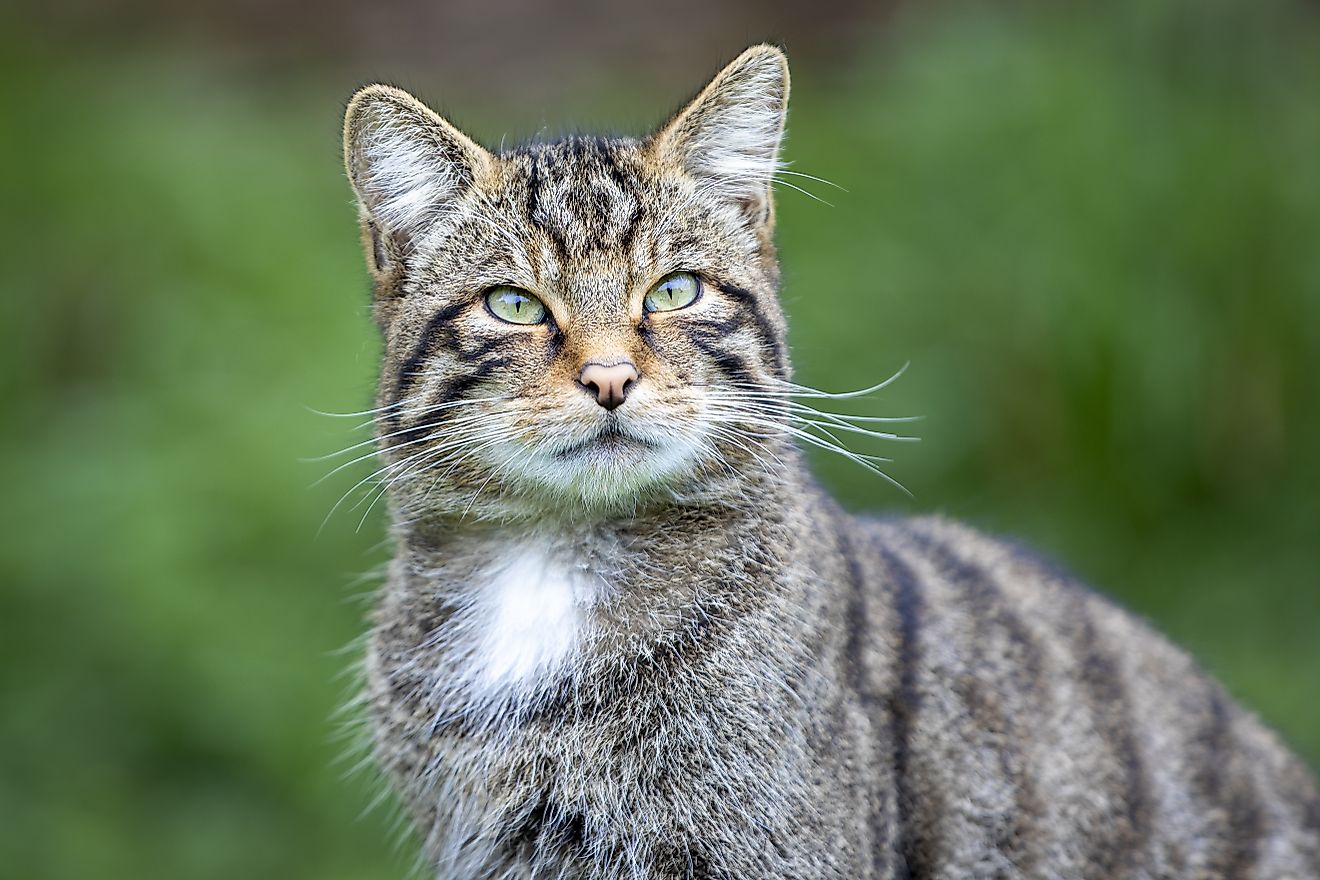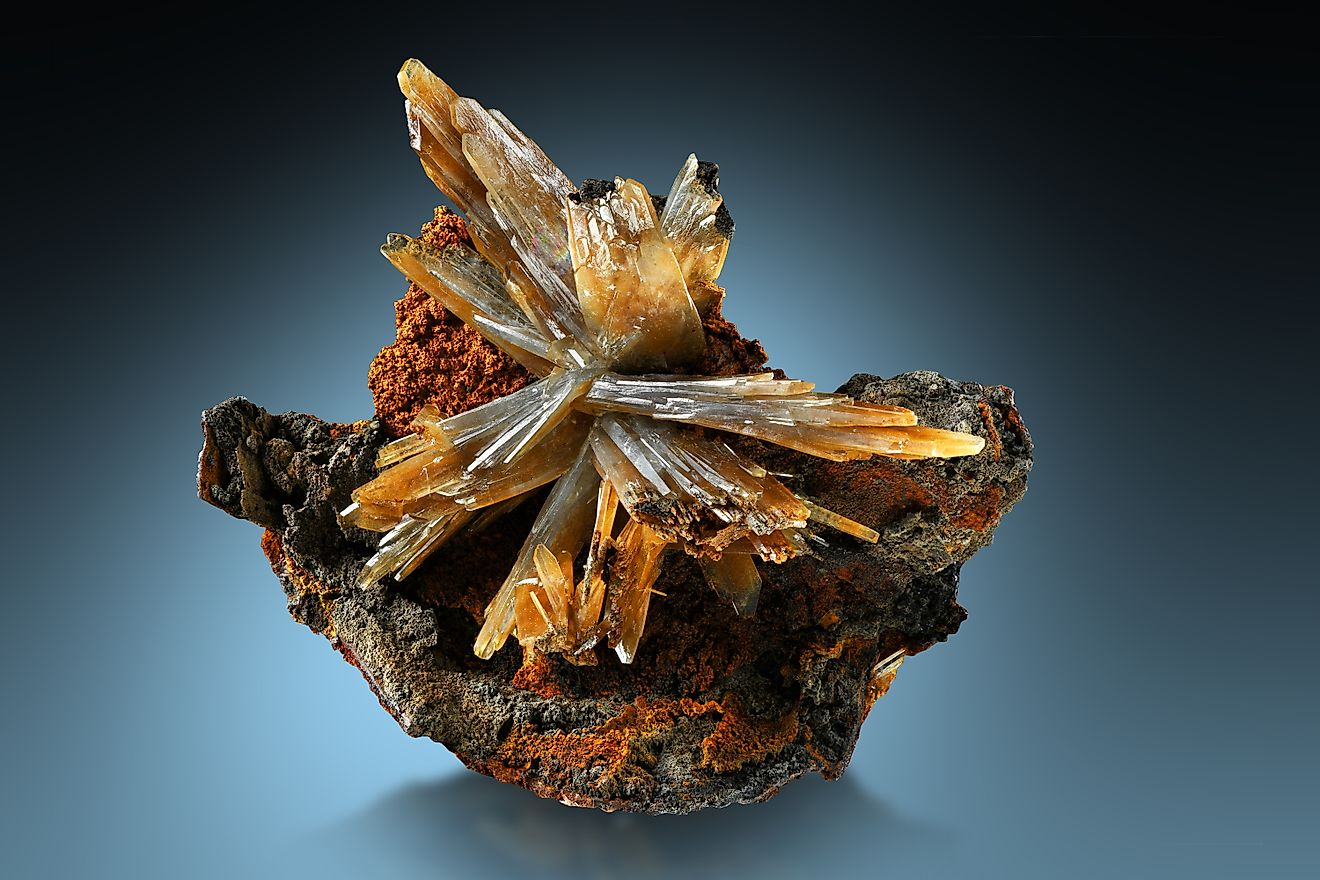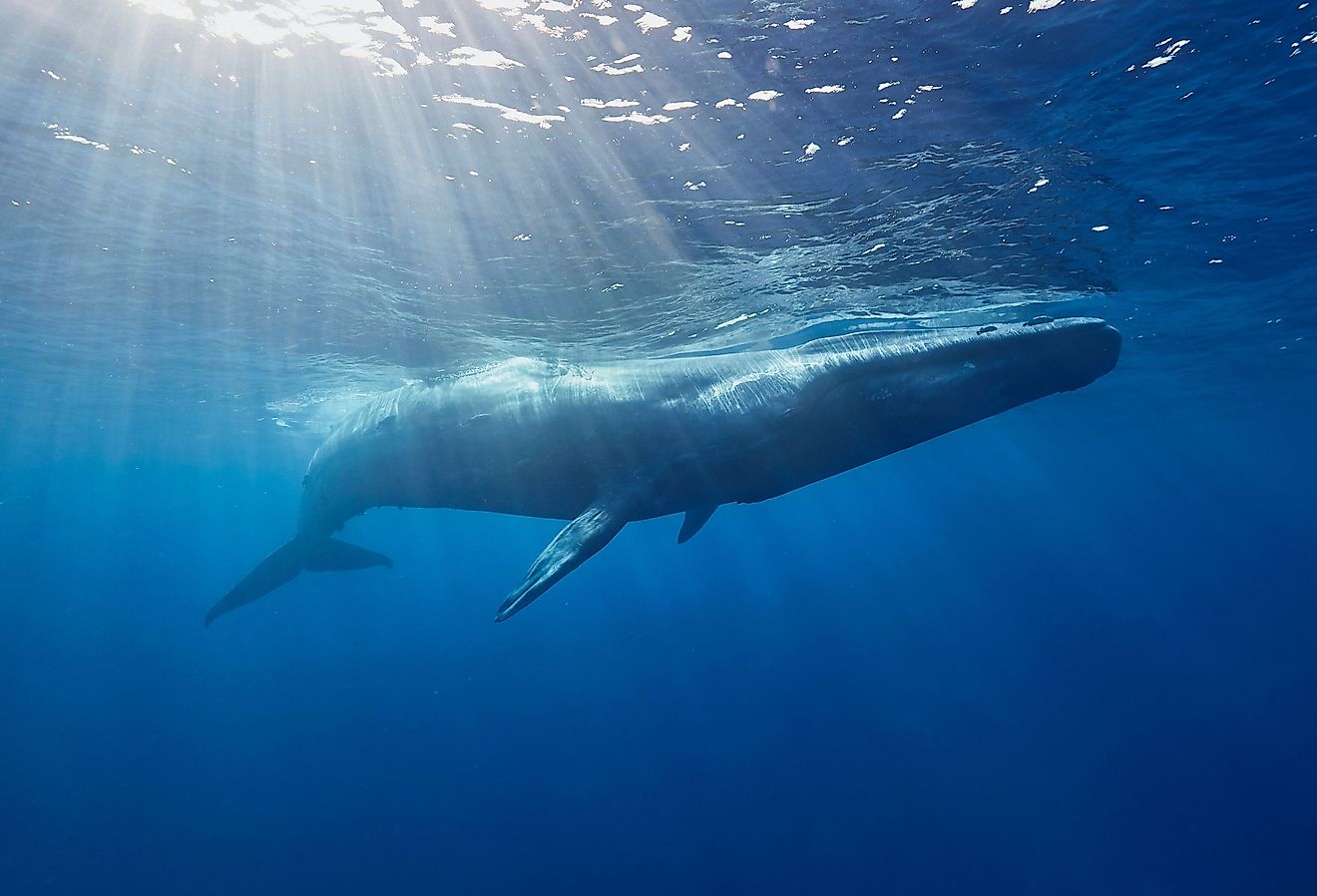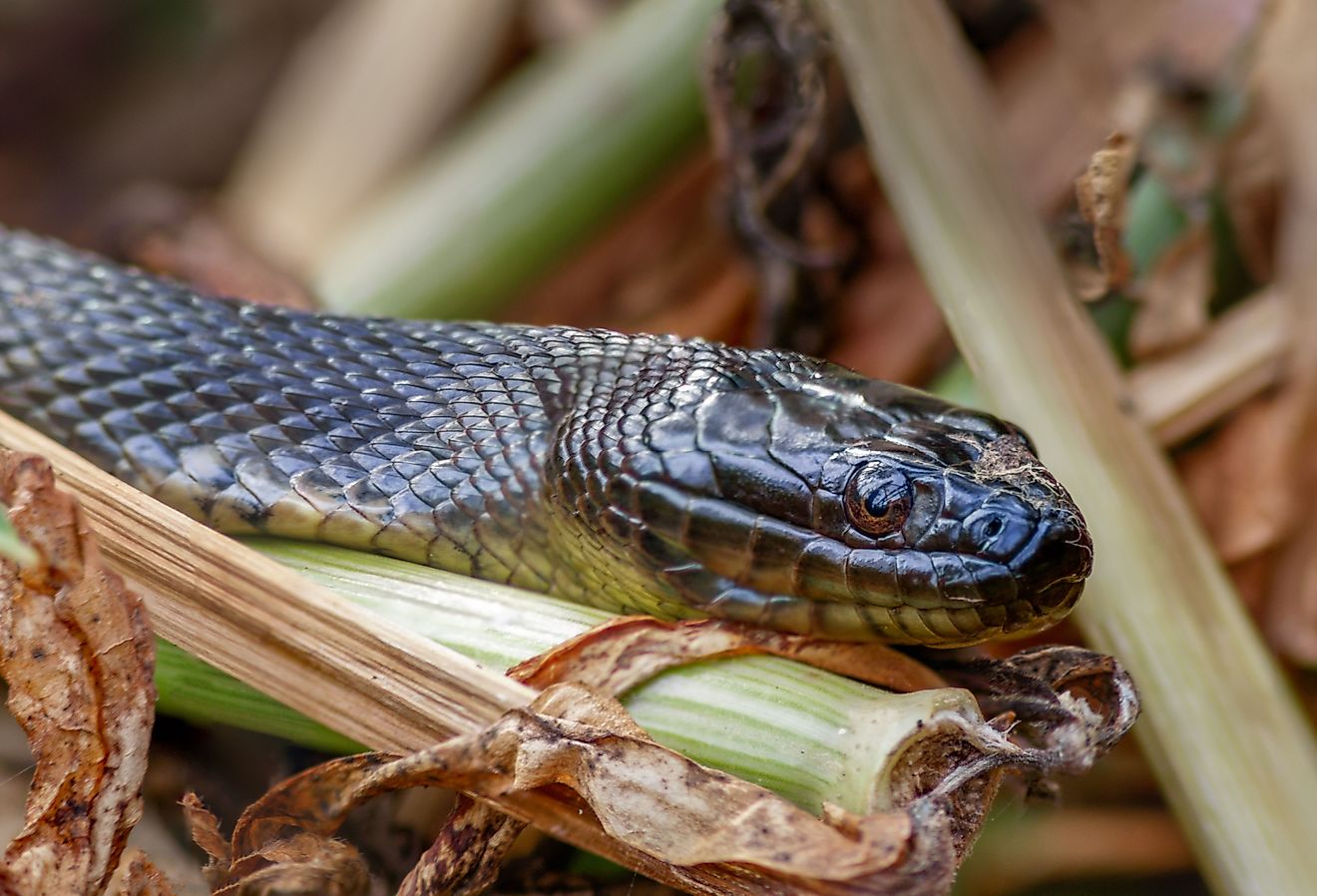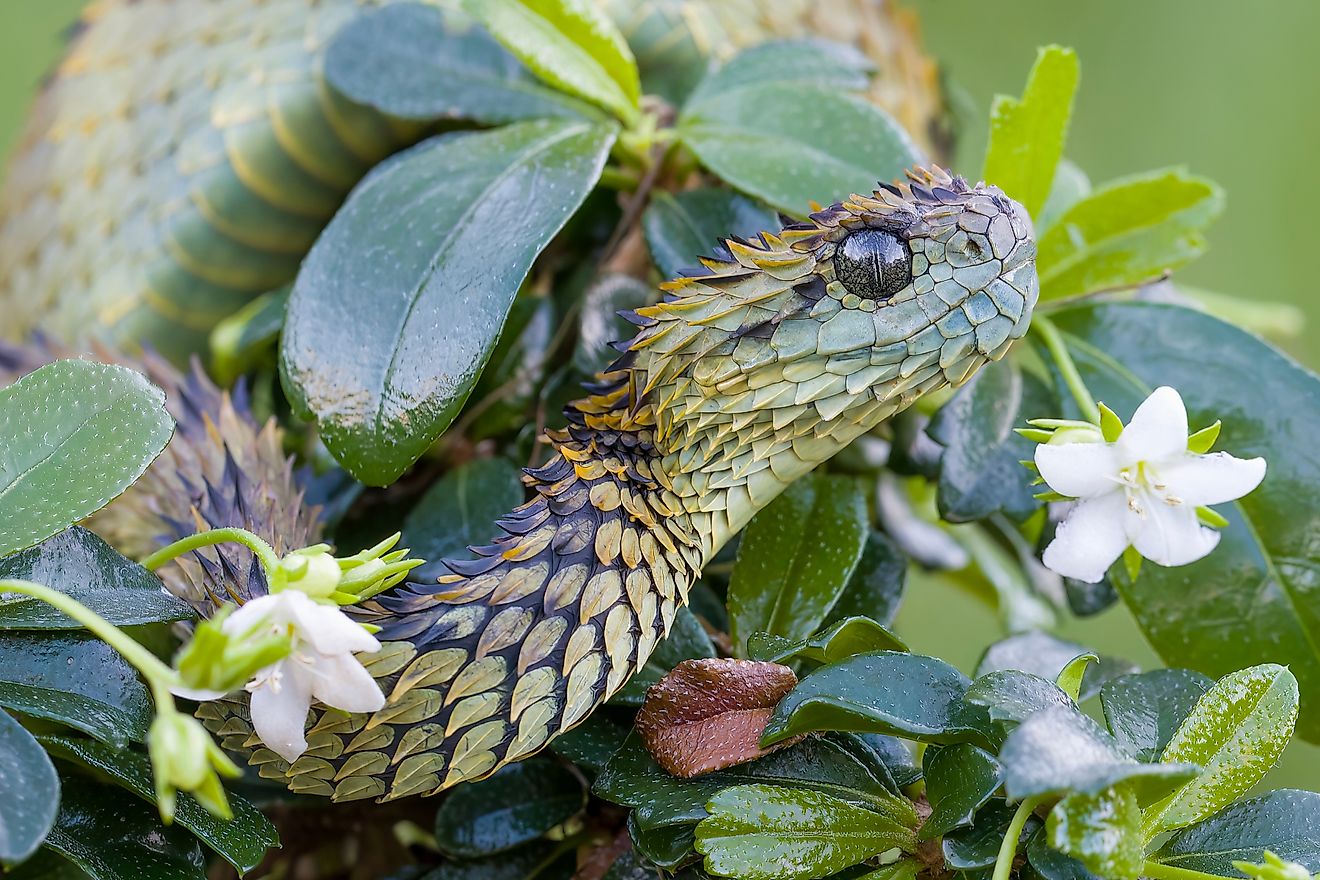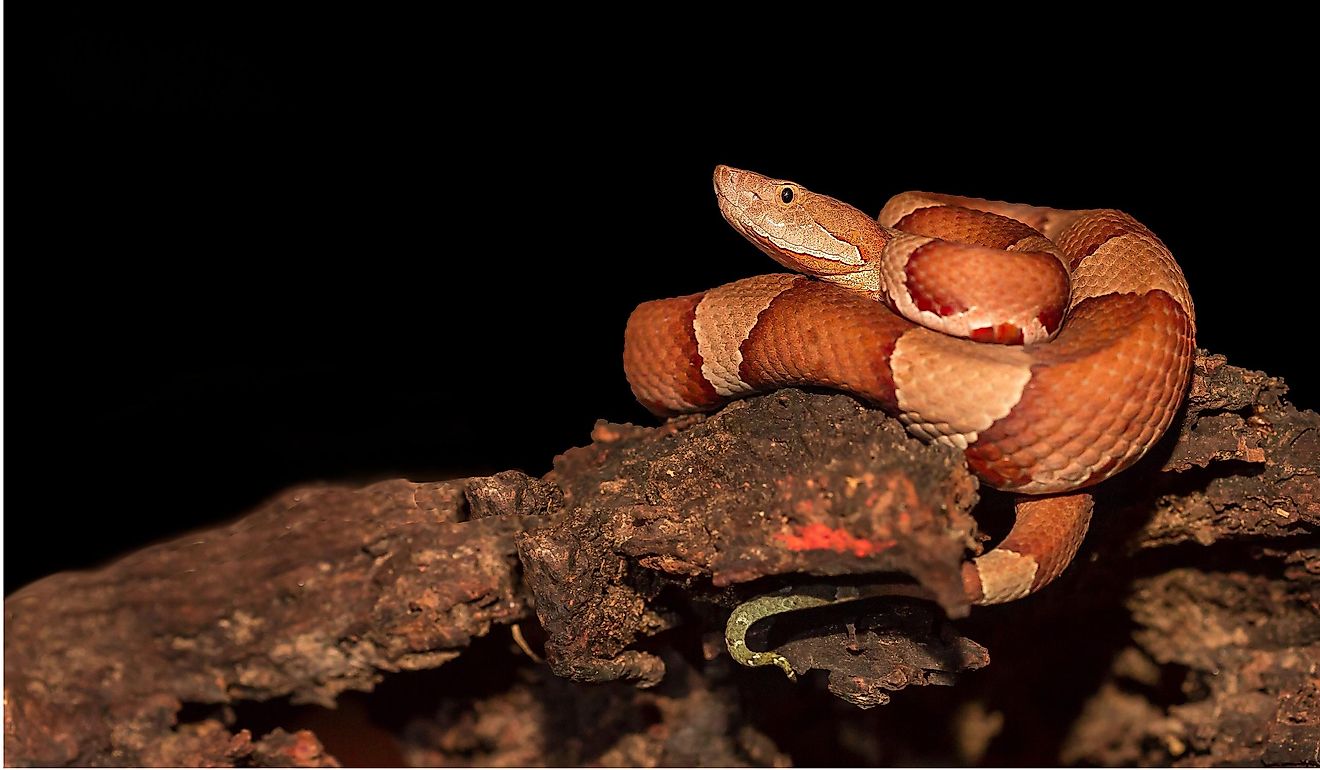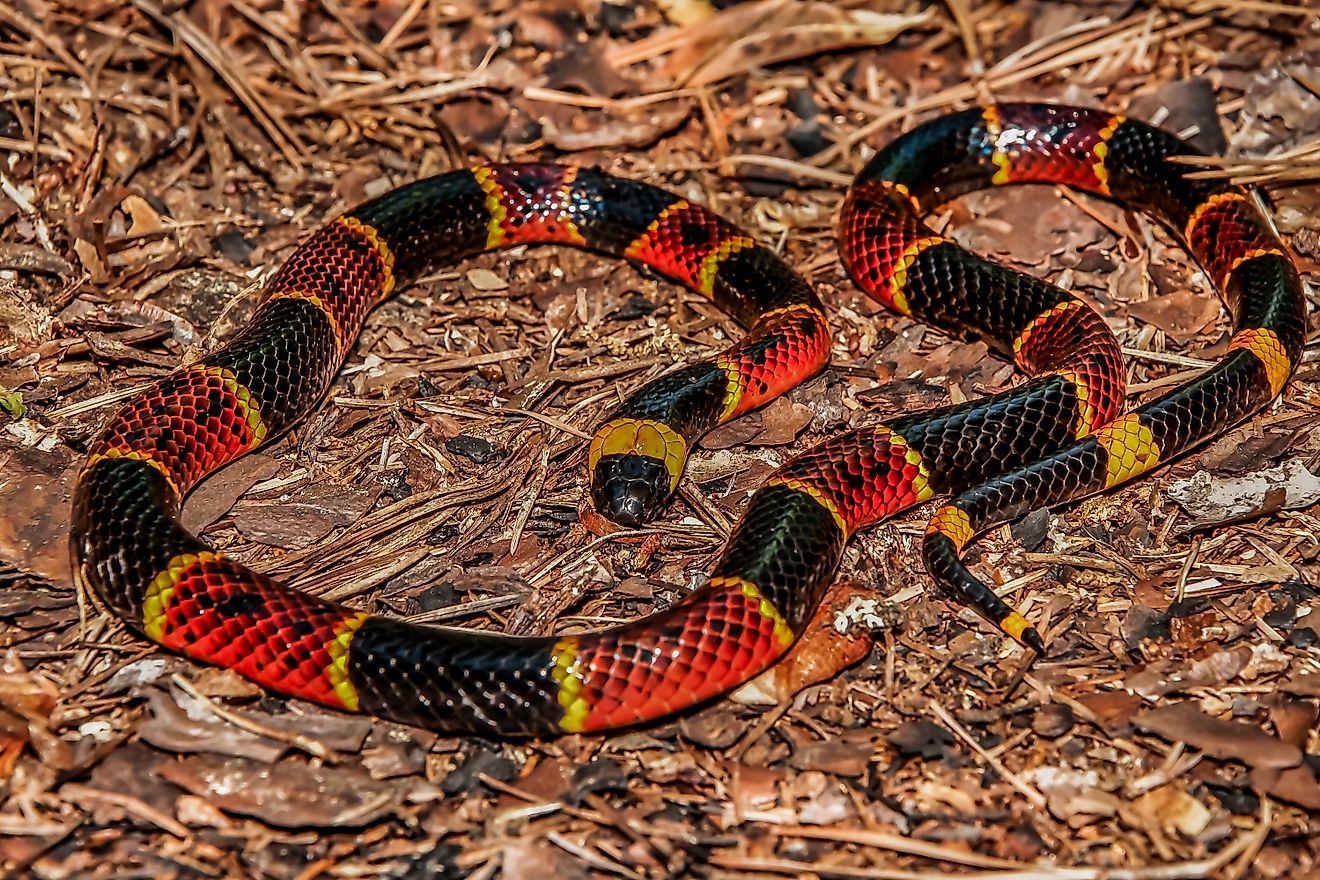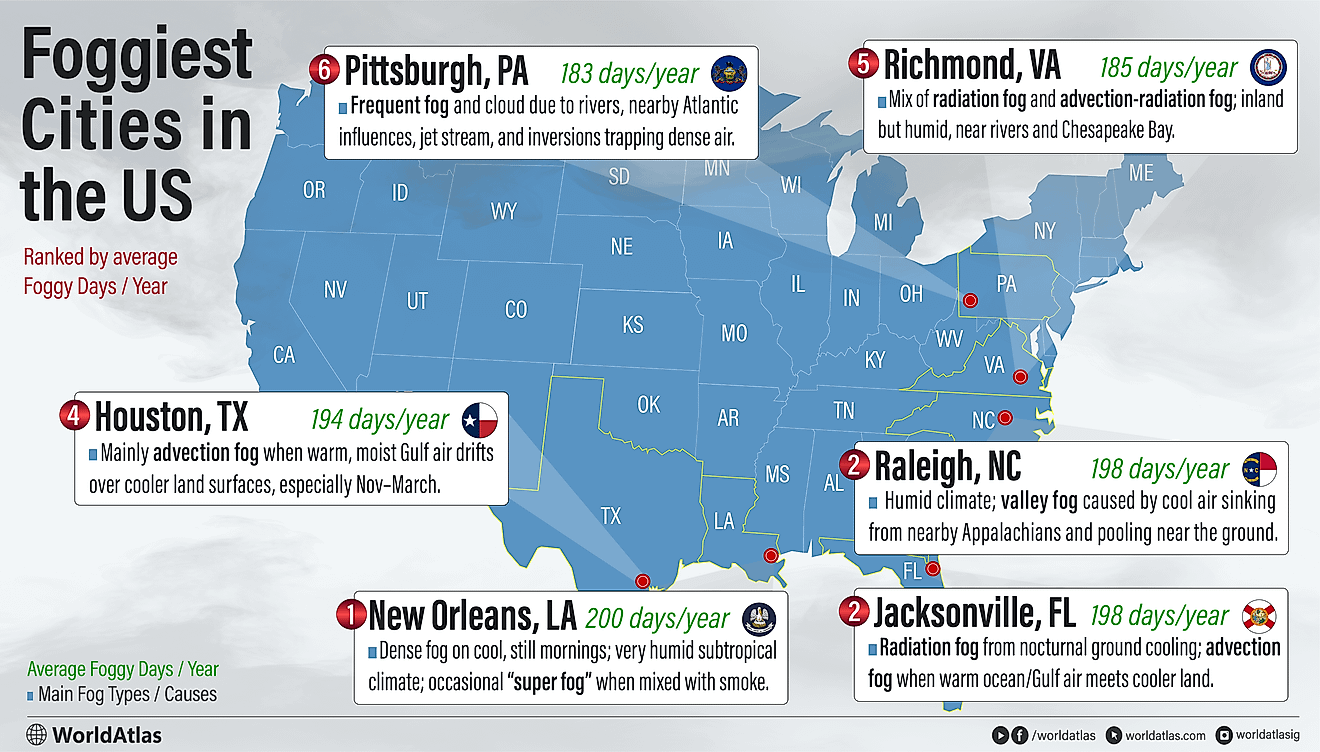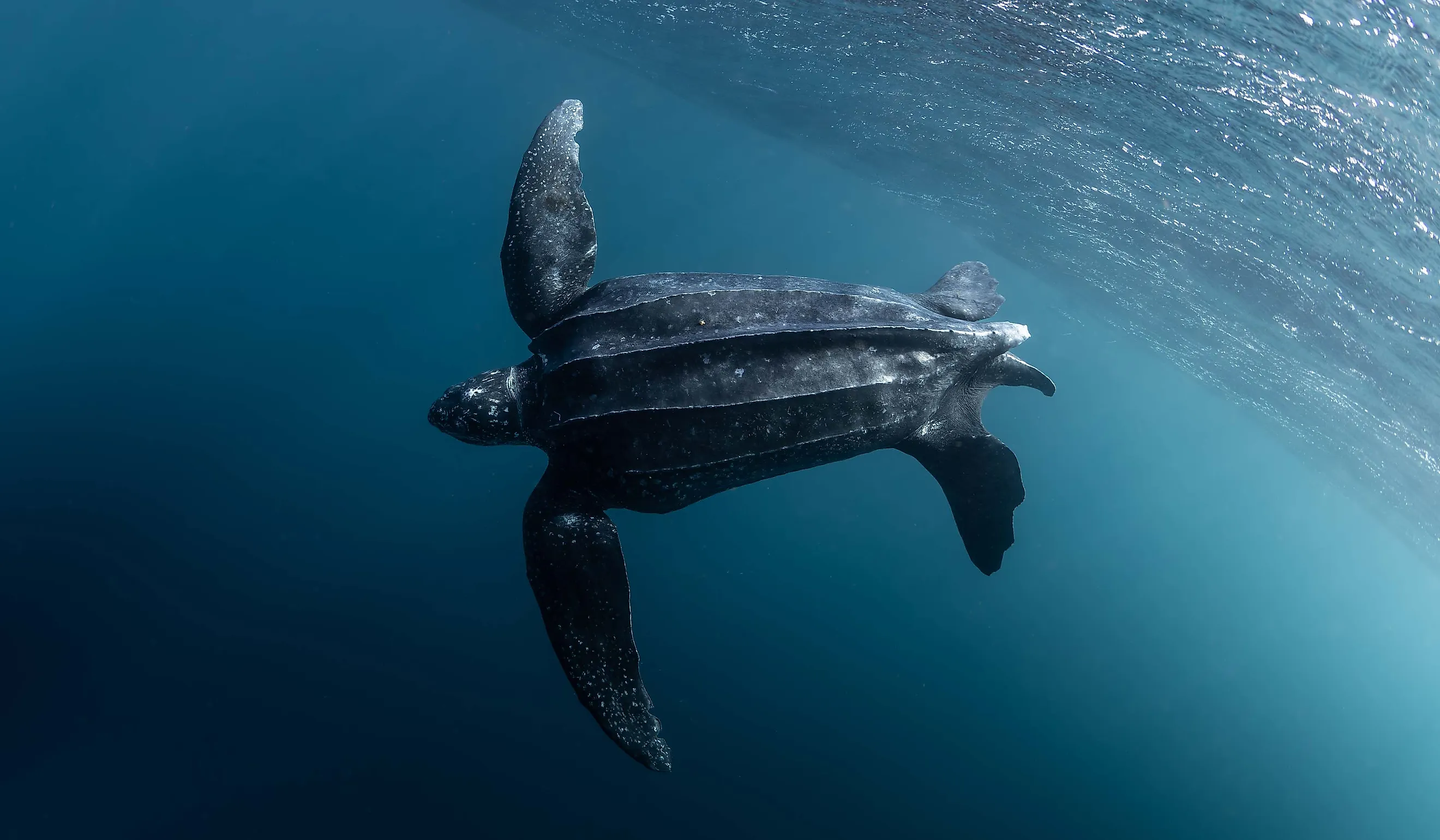
5 Endangered Animals Fighting For Survival In Rhode Island
Rhode Island might be the smallest state in the country, but it’s home to a surprising mix of habitats: salt marshes, barrier beaches, rocky islands, and dense inland thickets. Over the years, these landscapes have supported a wide range of wildlife, from tiny forest mammals to ocean giants passing through coastal waters. But some of these species are barely hanging on.
Endangered animals aren’t always easy to spot, and in many cases, that’s the problem. Populations have dropped so low that they’re no longer part of most people’s everyday experience. Still, they’re here - just under the surface, on the edges of ponds, or tucked into the back dunes. Thanks to local rescue efforts and conservation programs, some of them are getting a second chance.
Here are five endangered species fighting for survival in Rhode Island, and what’s being done to help keep them here.
American Burying Beetle
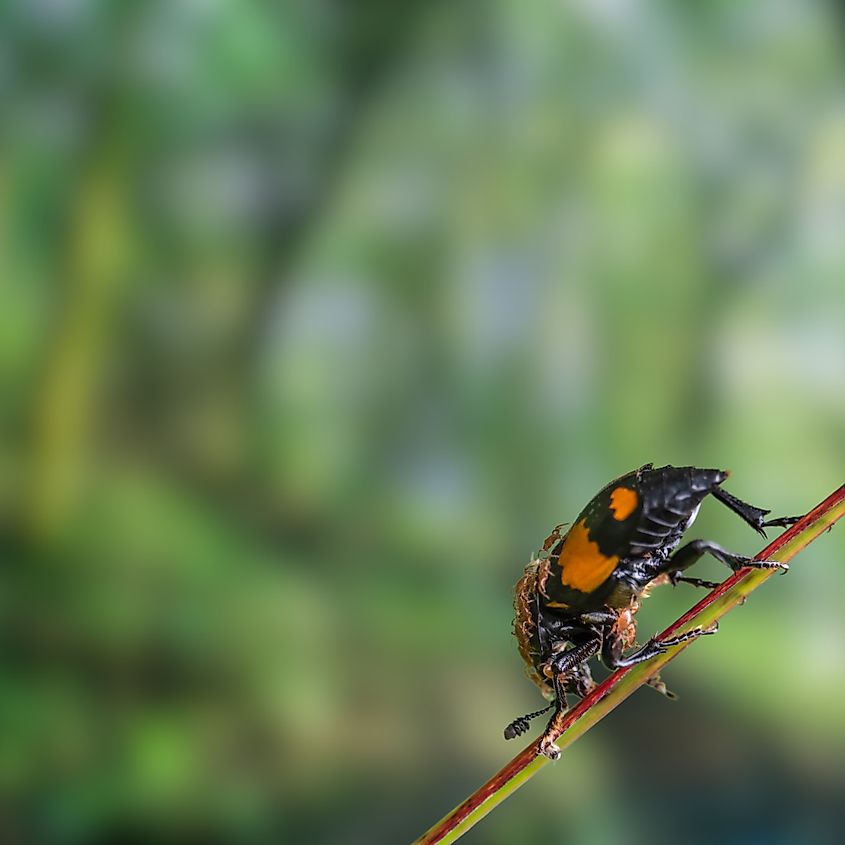
Once common across 35 states, the American burying beetle has now retreated to a few scattered pockets of land, and one of its last strongholds in the Northeast is in Rhode Island, on Block Island.
This beetle plays a surprisingly important role in the ecosystem. It buries small dead animals, which helps recycle nutrients and keeps the soil healthy. Unfortunately, over the past century, its numbers dropped rapidly. Some blame habitat loss, while others point to changes in carrion availability. There's even a theory that the beetle’s decline may have been linked to the extinction of the passenger pigeon, which once provided a major food source.
By the late 1980s, the beetle had vanished from almost everywhere in New England, except Block Island. Since then, conservationists have made it their mission to keep the population alive. The U.S. Fish and Wildlife Service and The Nature Conservancy began surveying the island in the 1990s, offering supplemental carrion and monitoring nesting activity. Meanwhile, Roger Williams Park Zoo has taken a leading role in captive breeding, raising thousands of beetles in its lab to help reintroduce them to sites in Massachusetts and elsewhere.
Beetles might not be everyone’s idea of a charismatic species, but their survival tells a bigger story about how interconnected and fragile ecosystems can be.
New England Cottontail
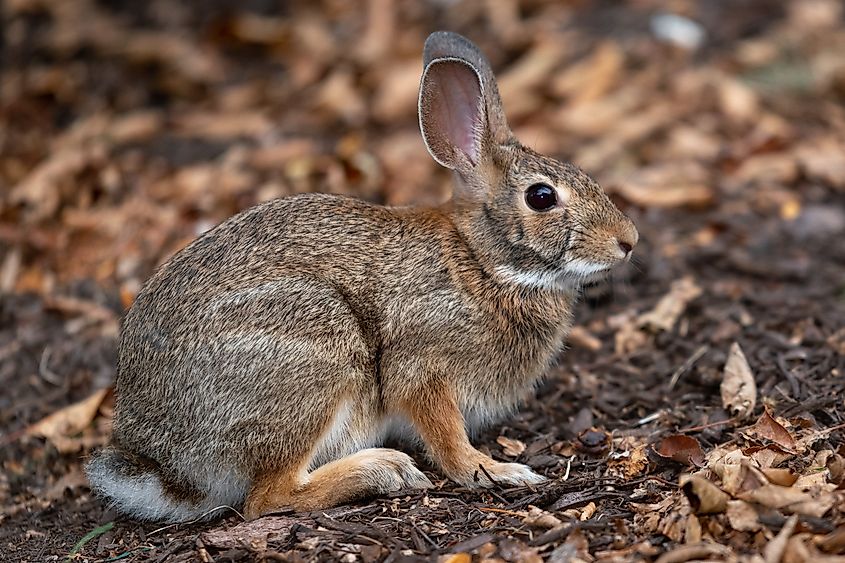
Not all rabbits in Rhode Island are created equal. The New England cottontail is the only native species, and it’s become increasingly rare across the state.
These rabbits once thrived in thick, brushy areas filled with shrubs and young trees. That kind of tangled vegetation was common after old farms were abandoned. Over time, though, as forests matured and new development spread, those dense thickets disappeared. Without them, the New England cottontail lost the cover it depends on to hide from predators and raise its young.
Another problem came with the introduction of the eastern cottontail. This non-native rabbit, brought in for hunting, is similar in appearance but far more adaptable. It moved into the same areas and has largely replaced the native cottontail in much of its original range.
Today, sightings in Rhode Island are extremely rare. There’s still hope, though. Roger Williams Park Zoo runs a captive breeding program in partnership with federal and state agencies. Young rabbits raised in the program are released in protected places like Ninigret National Wildlife Refuge, where conservation teams have been rebuilding suitable habitat and monitoring their progress.
Efforts to restore these landscapes are gaining momentum, and the cottontail is at the center of that work.
Roseate Tern
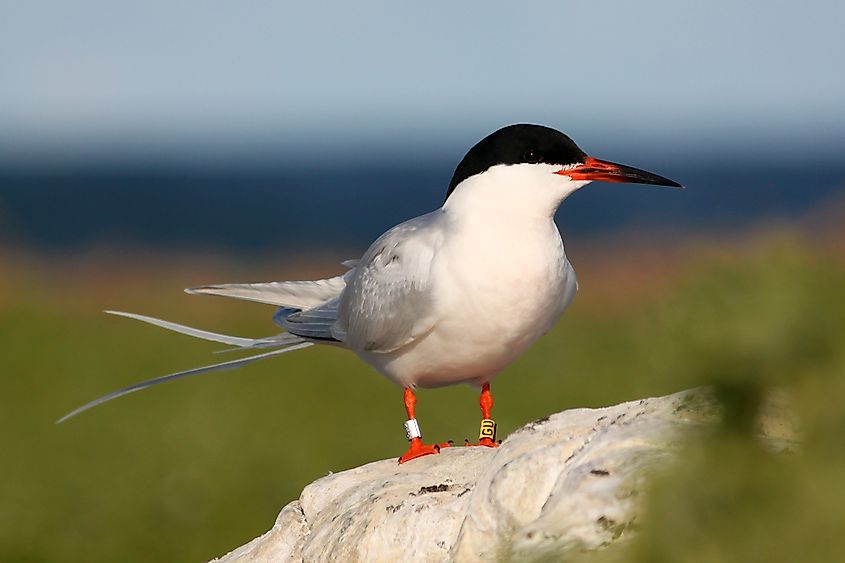
Along Rhode Island’s coast, the roseate tern is a delicate and fast-moving bird that has struggled to hold on. It’s slender, pale, and graceful in flight, but even with federal protections, its population remains fragile.
This species nests on small, rocky islands and beaches. Historically, they bred in scattered colonies throughout the Northeast, including spots off Rhode Island. But by the late 1800s, plume hunters had decimated tern populations to meet demand for feathers in the fashion trade. Although protections eventually stopped the hunting, the damage was already deep.
Today, the biggest threats are habitat loss and predators, particularly gulls, which compete for the same nesting areas and sometimes destroy tern eggs and chicks. Human disturbance also plays a role. When people get too close to nesting colonies, the birds may abandon their nests entirely.
Despite these challenges, conservation teams have made progress. Researchers and volunteers monitor tern colonies, install nesting shelters, and actively manage predator activity. While the largest colonies are now found in Massachusetts, a few breeding pairs have returned to Rhode Island, including on protected islands managed by the U.S. Fish and Wildlife Service.
One of the key programs supporting the roseate tern is based at the University of Massachusetts Amherst, where scientists track migration patterns using geolocators to guide international conservation efforts.
Leatherback Sea Turtle
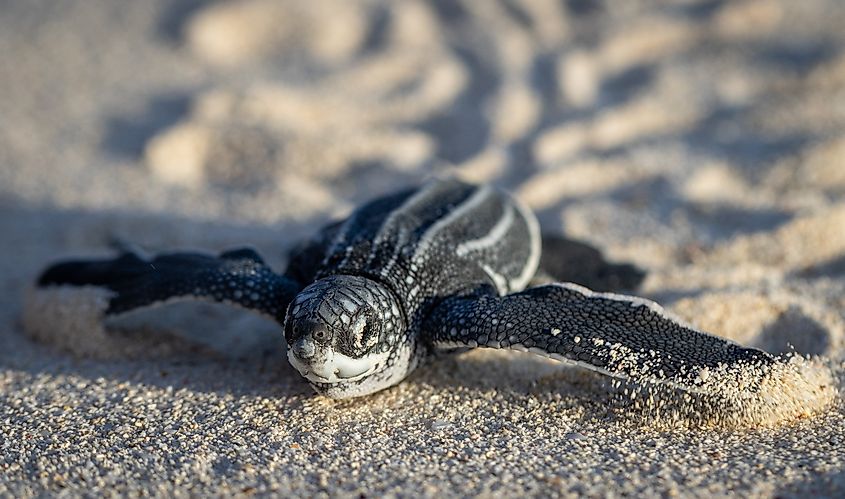
The leatherback sea turtle is one of the ocean’s true giants. Adults can reach up to seven feet long and weigh as much as a small car! Every summer, a few of these massive turtles pass through the waters off Rhode Island’s coast, part of a long migration that stretches from the Caribbean to the cold waters of the North Atlantic.
Unlike other sea turtles, leatherbacks don’t have a hard shell. Their backs are covered in a thick, leathery skin with ridges that help them glide through open water. They feed mostly on jellyfish, which are plentiful in New England during warmer months. But that diet can get them into trouble. Plastic bags floating in the water look a lot like jellyfish, and leatherbacks often swallow them by mistake.
Bycatch is another major threat. These turtles can get tangled in fishing lines and nets, which can cause injury or drowning. They’re also vulnerable to boat strikes, especially in busy nearshore waters where their heads surface for air.
Rescue networks across the Northeast keep a close watch during migration season. Mystic Aquarium leads the response to strandings and entanglements in this region. In Rhode Island, marine rescue teams and state agencies step in when turtles are found in trouble - whether cold-stunned, injured, or caught in debris.
Leatherbacks are rarely seen up close, but they are very much part of Rhode Island’s natural story. Their survival depends on how we care for the waters just offshore.
Northern Diamondback Terrapin
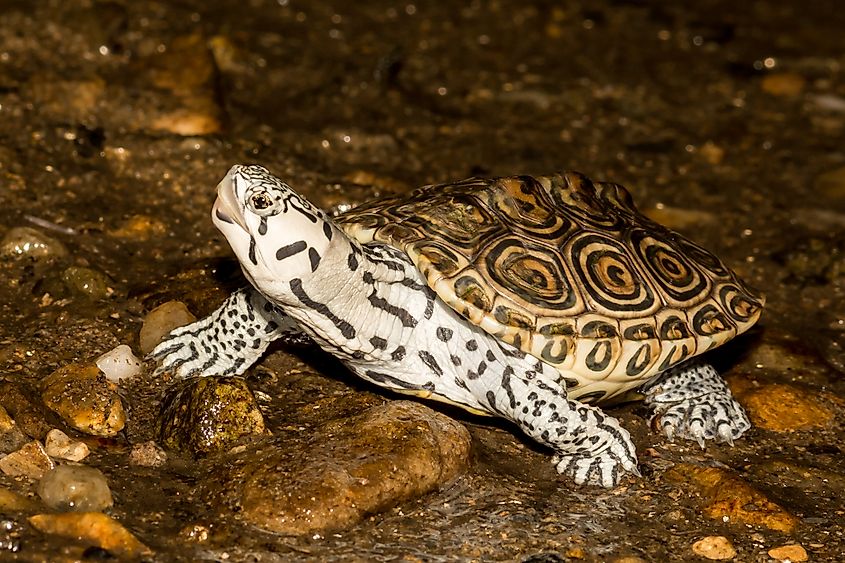
The northern diamondback terrapin is a salt marsh turtle with a speckled face and a shell patterned like old pottery. It lives where the tide meets the land, such as brackish coastal marshes, quiet estuaries, and hidden creeks. These places once stretched along much of Rhode Island’s shoreline, but now only fragments remain.
Terrapins face a number of threats. Shoreline development has eaten away at nesting sites. Invasive plants like phragmites crowd out native vegetation and make it hard for turtles to move or nest. Road mortality is also a problem, especially when females cross busy streets to reach higher ground to lay eggs. On top of that, poaching remains a concern, with illegal wildlife trade targeting these turtles for the pet market.
Despite their vulnerable status, terrapins are getting attention thanks to a community-driven effort in Barrington. The Barrington Land Conservation Trust runs a monitoring program where local volunteers record sightings, check for nesting females, and help install protective barriers near high-risk roads. With support from URI and the Rhode Island Department of Environmental Management, the program has helped track the health of the population and educate the public on how to avoid disturbing them.
These turtles are shy, and they tend to keep to themselves. Their presence is a sign that a coastal ecosystem is functioning, and their absence tells us when something’s gone wrong.
Conservation in Rhode Island often happens quietly. It’s in the hours spent tracking a turtle’s nest, raising beetles in a lab, or planting native shrubs to rebuild lost habitat. These efforts don’t always make headlines, but they matter, especially to the species that have the most to lose.
Each animal featured here tells part of a larger story about land use, changing ecosystems, and the balance between people and wildlife. Protecting them means protecting the places they rely on, and in many cases, that benefits far more than a single species.
The work is ongoing, and while not every endangered animal in Rhode Island can be brought back, some clearly can. With the right mix of science, care, and long-term commitment, these species still have a place in the state’s future.
